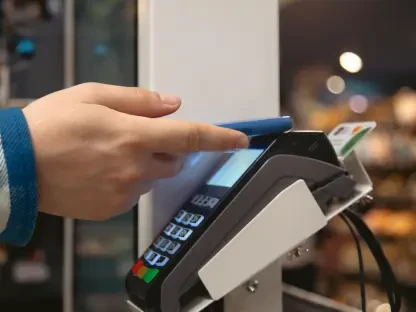The Landscape of Restaurant Loyalty Programs
In the fast-casual dining sector, loyalty programs have become a cornerstone for building customer relationships, with nearly 70% of consumers stating they are more likely to frequent brands offering robust reward systems. This trend underscores a competitive environment where restaurants must continuously innovate to stand out. Chains across the spectrum are leveraging these initiatives not just to retain patrons but to drive repeat business in a market saturated with dining options, making loyalty a critical metric for sustained growth.
The significance of these programs extends beyond mere discounts, acting as a powerful tool for brand differentiation and customer engagement. Major players like Chipotle, Starbucks, and Dunkin’ have set high benchmarks with their loyalty models, often integrating personalized offers and seamless digital experiences. Their influence has pushed smaller chains to adopt similar strategies, creating a ripple effect that shapes industry standards and heightens the stakes for new entrants aiming to capture market share.
Technological advancements play a pivotal role in this evolution, with mobile apps and data analytics enabling brands to tailor rewards to individual preferences. These tools allow restaurants to track spending patterns and predict consumer behavior, fostering more effective program designs. However, as consumer expectations rise for instant gratification and meaningful value, the competitive nature of the market demands constant innovation to keep pace with shifting demands and maintain relevance.
Unveiling Cava’s Revamped Loyalty Program
Key Features of the Tiered System
Cava, a Mediterranean fast-casual chain, has introduced a tiered loyalty program that categorizes members into three distinct levels: Sea, Sand, and Sun, based on annual points earned. Starting at Sea with 0 points, customers progress to Sand at 1,500 points and reach Sun at 4,500 points or more. Points accumulate at rates of 10, 11, and 12 per dollar spent across these tiers, respectively, with benefits escalating to include birthday gifts, multiplier events, and delivery fee waivers for higher levels.
Beyond basic rewards, the program offers exclusive perks to incentivize engagement, such as early access to new menu items and special events for Sun members. Multiplier events further enhance value, doubling points for Sea, tripling for Sand, and quadrupling for Sun during designated periods. This structure gamifies spending, encouraging customers to visit more frequently and increase their purchases to unlock superior advantages.
The tiered approach aims to create a sense of achievement, pushing patrons to climb the ranks for better returns on their loyalty. Delivery fee waivers, offered once quarterly for Sand and thrice for Sun, add practical benefits that resonate with frequent users. By layering these incentives, Cava seeks to deepen emotional connections with its base, fostering a cycle of sustained interaction with the brand.
The Status Matching Initiative
A distinctive element of Cava’s strategy is its status matching initiative, active from October 13 to November 23 of this year. This program targets elite members from loyalty programs of brands like Sephora, Starbucks, and Hyatt, allowing them to fast-track into Sand or Sun tiers for the current year. Points earned during this period also accelerate tier determination for the following year, providing a head start for maintaining or advancing status.
Strategically, this move is designed to attract high-value customers from competing sectors by recognizing their established loyalty elsewhere. It lowers the entry barrier for potential patrons who already demonstrate significant spending habits, positioning Cava as an appealing option for those seeking cross-industry reward recognition. This initiative taps into a pool of proven spenders, aiming to convert them into long-term advocates.
By leveraging status matching, Cava differentiates itself in a crowded field, introducing a concept rarely seen in restaurant loyalty programs. This cross-industry approach not only broadens its customer acquisition funnel but also signals an innovative mindset, potentially setting a precedent for how brands can collaborate or compete through shared loyalty frameworks. Such a tactic underscores Cava’s ambition to redefine engagement norms.
Challenges in Implementing Innovative Loyalty Programs
Introducing a novel loyalty program is not without obstacles, as Cava must balance profitability with the allure of attractive rewards. Offering escalating points and perks can strain margins, especially if redemption rates outpace projected revenue gains. Striking this equilibrium requires careful calibration to ensure the program remains sustainable without diluting its appeal to participants.
Customer dissatisfaction poses another risk, particularly if the perceived value of rewards diminishes over time. Examples from the industry, such as Dunkin’ facing backlash after reducing discounts, highlight how missteps in program adjustments can alienate loyal patrons. Cava must remain vigilant to avoid similar pitfalls, ensuring that benefits consistently match or exceed expectations to maintain trust.
Technological hurdles also loom large, with data privacy concerns and system integration challenges potentially undermining execution. Safeguarding customer information while seamlessly blending new features into existing platforms demands robust infrastructure and clear policies. To mitigate these issues, transparent communication about data usage and continuous evaluation of program performance can help address concerns and refine operations over time.
Industry Standards and Consumer Expectations
Across the restaurant sector, loyalty programs are increasingly judged by their ability to deliver tangible value, as consumers demand rewards that justify their spending. This expectation has become a benchmark, with patrons favoring brands that offer clear, immediate benefits over vague promises. Meeting this standard is essential for any program aiming to retain a competitive edge in a discerning market.
Personalization and flexibility have emerged as critical components in addressing diverse customer needs, allowing brands to tailor experiences based on individual habits. Programs that adapt to varying preferences—whether through customized offers or adjustable redemption options—tend to resonate more deeply. Cava’s tiered structure aligns with this trend by offering progressive rewards, though it must ensure accessibility across different customer segments to avoid exclusion.
Economic pressures further complicate the landscape, as tighter budgets influence dining habits and heighten the need for loyalty programs to adapt. Consumers now prioritize value-driven incentives that offset costs, pushing brands to rethink traditional models. While Cava’s initiative mirrors industry benchmarks set by competitors like Starbucks in terms of progression, its status matching feature offers a unique twist that could redefine how value is perceived in loyalty contexts.
Future Outlook for Cava and Restaurant Loyalty Trends
Cava’s tiered system and status matching initiative are poised to significantly influence long-term customer engagement and acquisition, potentially setting a new bar for fast-casual dining. By incentivizing repeat visits through structured rewards and attracting high-value patrons from other brands, the chain could see sustained growth in its loyal base. This dual strategy may inspire similar experiments across the sector over the coming years.
Emerging trends in loyalty programs point toward greater gamification, cross-brand partnerships, and AI-driven personalization as key areas of focus. These innovations aim to enhance user experiences by making rewards more interactive and relevant, with technology playing a central role in predicting and shaping behavior. Cava’s current framework positions it well to adopt such advancements, provided it remains agile in implementation.
Potential disruptors, including economic shifts or new competitors with groundbreaking models, could challenge the status quo, necessitating adaptability. As consumer preferences evolve alongside market dynamics, the ability to pivot quickly will determine program relevance. For Cava, staying ahead will require ongoing analysis of industry shifts and a commitment to refining its offerings in response to unforeseen changes.
Conclusion: Redefining Value in Customer Loyalty
Reflecting on Cava’s bold steps with its tiered loyalty structure and status matching initiative, it becomes evident that the brand has positioned itself as a trailblazer in the fast-casual dining arena. These strategic moves not only enhance customer engagement but also carve out a distinctive niche amid fierce competition. The focus on escalating rewards and cross-industry recognition marks a significant shift in how value is delivered to patrons.
Looking ahead, brands across the sector could draw valuable lessons from this approach by prioritizing innovation and customer-centric design in their own programs. Investing in technology to personalize experiences and exploring unconventional partnerships might offer a pathway to differentiate in a saturated market. Continuous feedback loops and data-driven adjustments could further ensure that loyalty initiatives remain aligned with evolving expectations.
Ultimately, the challenge for industry players lies in sustaining relevance through adaptability, ensuring that rewards programs evolve alongside consumer needs. For Cava, maintaining this momentum will hinge on balancing creativity with practicality, setting a potential blueprint for others to follow. This forward-thinking mindset could very well redefine the benchmarks for customer loyalty in the years to come.









